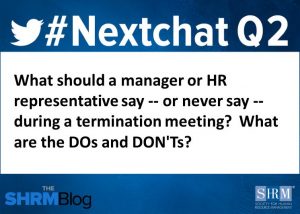An Employer’s Guide to Handling an Employee’s Termination Procedure
An Employer’s Guide to Handling an Employee’s Termination Procedure
Employee Termination Procedure
Terminating an employee is never easy and most often it’s a manager’s most difficult responsibility, but regardless, employers should have an employee termination procedure in place.
Terminations that are caused by poor performance or willful misconduct could result in unsubstantiated unemployment claims. It’s very important to clearly document any performance issues to avoid unnecessary benefit payments or increases in annual state tax premiums.
On Wednesday, January 17th, our UI expert Anthony Paradiso hosted a Twitter chat (@shrmnextchat #Nextchat) to help answer termination-related/unemployment insurance questions. During the chat, Anthony and other experts shared insights on how to preserve an employee’s dignity during the employee termination procedure, while protecting against unnecessary liability and expense for the employer.
Anthony said, “Not everyone can predict the future success of their employees. At some point, somewhere along the line, mistakes will be made and termination could be necessary. Thinking that your company will never face a UI claim is a huge mistake.”
Understanding the correct process and progression for discipline and termination is vital for successful outcomes for the employee termination procedure and unemployment insurance issues.
Here are some highlights from the Twitter chat:
What should a manager or HR representative say — or never say — during a termination meeting? What are the DOs and DON’Ts?
First DON’T is that you should never choose to terminate an employee in the heat of the moment. What’s even worse is failing to discuss the problem with them prior to termination and not giving them a reasonable warning or “prior notice”. For more recommended reading on this topic: Common Mistakes Employers Make When Terminating an Employee
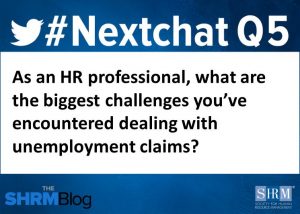
There are many challenges HR professionals face, but some of the most common ones are lacking the proper documentation to return the claim on time, and not having proper witnesses or documentation to successfully protest the claim. Read our article for more information on this topic: Top 5 Employer Mistakes When Facing UI Claims. There is a common misconception that a person is not eligible for UI when they quit, but is when they are fired. That is not accurate. UI Claimants may be eligible for benefits in either scenario based on the facts and circumstances.
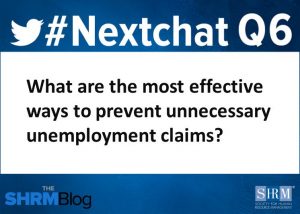
An employer is held to high standards in terms of documentation and adherence to policies and procedures. It is the employer’s responsibility to show the claimant was aware of their policies, knew they could be fired for the infraction, and then chose to violate the policy. Obviously, the burden is high, so the employer needs to make sure it has its T’s crossed and I’s dotted.
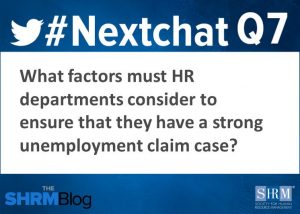
It’s common for employers to contest UI claims and they often need to present evidence by providing solid documentation. There should be adequate systems in place to document any employee warnings or disciplinary actions. It’s crucial to keep relevant employee-related records and recognize when UI eligibility can be prohibited. To understand more about when an employee would not be eligible read our article: Denying Unemployment Benefits
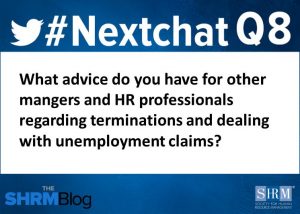
Employers must deal with all aspects of UI management. Knowing the difference between poor performance and misconduct can help employers determine when they should terminate employees and the manner in which they respond to UI claims. Paying UI benefits can be avoided if the reported reason is consistent with the state’s definition of misconduct. In cases of misconduct or violations of company policy, documentation, such as prior warnings, employee handbooks, acknowledgement-of-receipt forms and resignation letters, can be used by the employer to defend against a claim.
Contact us for more information on the employee termination procedure, and for a complete transcript of the Twitter chat, click here.


